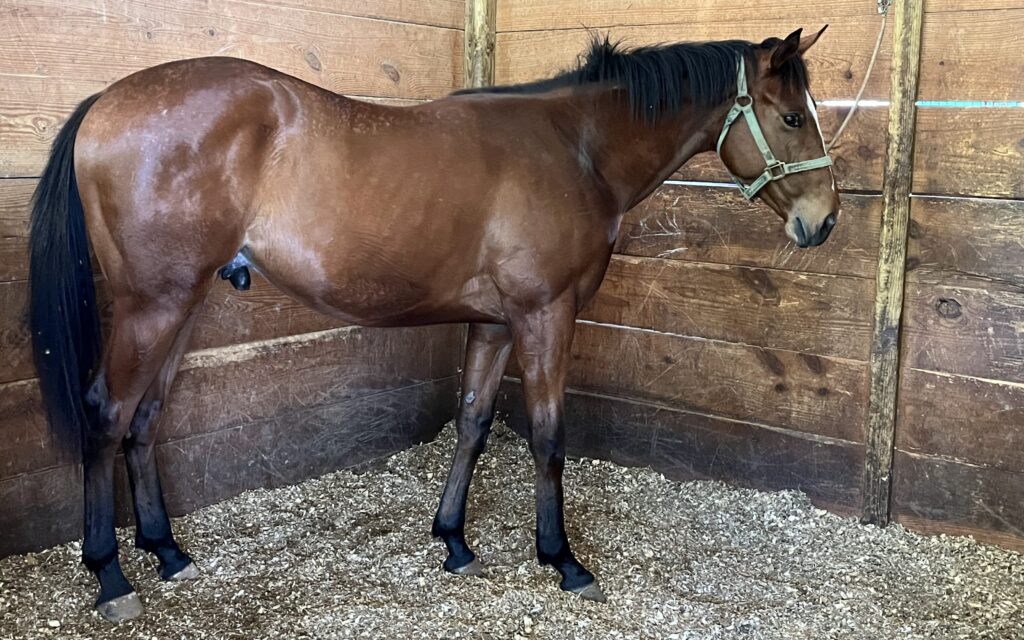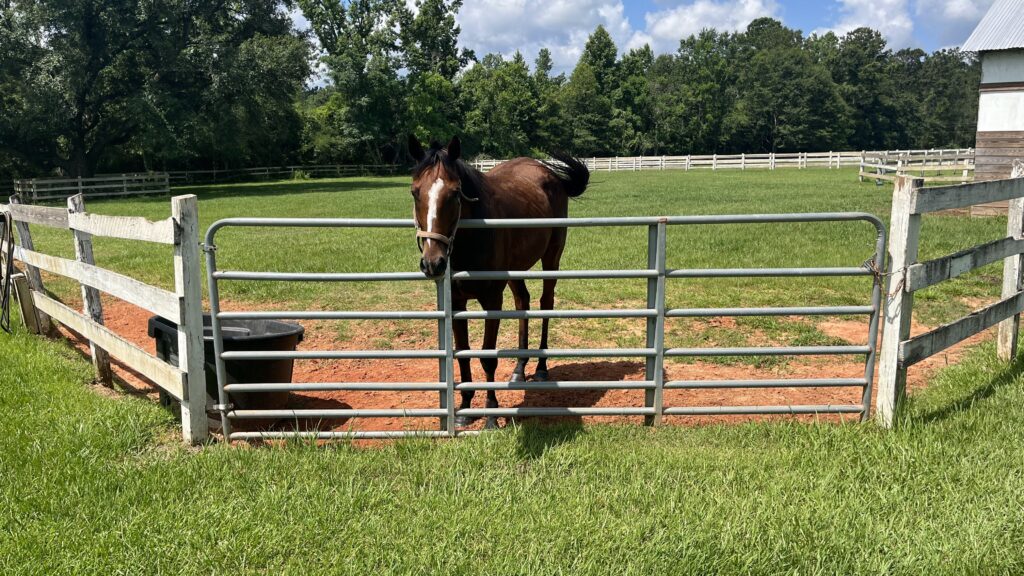Published on: October 29, 2022
Any links on this page that lead to products on Amazon are affiliate links and I earn a commission if you make a purchase. Thanks in advance – I really appreciate it!
My neighbor bought an older gelding for trail riding. He told me that the horse was having difficulty urinating and seemed to be in pain. I asked him if he had cleaned his sheath recently, and he said he never heard of this.
Cleaning a horse’s sheath refers to removing any built-up urine, semen, and dirt from the horse’s penile sheath. Bean removal, specifically, aids in preventing urinary obstructions. This process is important for both hygiene and comfort, as build-up can lead to irritation and discomfort for the horse.
As a responsible horse owner, it is vital to stay on top of these maintenance tasks. I encourage all horse owners to make sure they are properly cleaning their horse’s sheath and remove beans on a regular basis. Your horse will thank you for it. Keep reading to learn how to get the job done.

What is the purpose of cleaning a horse’s sheath and removing beans?
Male horses may naturally produce a waxy substance called “smegma” in their sheaths. This substance can build up and potentially cause problems for the horse if not regularly cleaned out. It is more of a problem in geldings than stallions.
Additionally, horses that are ridden often may also need regular sheath cleaning to prevent any buildup of dirt or debris. In general, it is a good idea for all male horses to have their sheaths cleaned at least once a year by a veterinarian or experienced horse handler.
During cleaning, excess hair and debris will be removed from the sheath area. Removing beans, which are formations of hardened smegma, can also prevent discomfort and infection.
It is also important to check for any issues during cleaning, such as swelling or unusual discharge, which may indicate a health problem and require immediate veterinary attention.
Below is a helpful YouTube video that shows how to clean a horse’s sheath.
How can you tell if your horse needs his sheath cleaned?
Common signs that a horse may need its sheath cleaned and beans removed include an overly full or swollen appearance of the sheath, a foul smell coming from the area, excessive amounts of smegma (a white, cheesy substance), or behavioral signs such as sensitivity or discomfort while being groomed in that area.
When my neighbor’s horse struggled to urinate and wasn’t acting like himself, we knew something was wrong. These are common symptoms of sheath obstruction, so I cleaned the area and removed a large bean. The horse immediately felt better.

How to clean your horse’s sheath at home?
There are various methods to clean your horse’s sheath at home. To start, you will need a hose or bucket of warm water, mild liquid soap, a sponge or cloth, and rubber gloves. (Some horse owners use commercial sheath cleaners like Excalibur or Equi-Pro.)
First, make sure to tie up or restrain your horse, so they are unable to kick or move suddenly. Gently lift the sheath and wash it with warm water and soap until any visible dirt is removed. You should use your hand or a soft cloth to gently massage the area and loosen any built-up debris.
It is important to be gentle and never force anything out of the sheath. After cleaning, rinse with water and dry thoroughly before releasing your horse.
While doing research for this article, I read about the “Bean Queen,” who has been cleaning horses’ sheaths for 27 years. Here are her recommendations:
- Never scrub your horse’s sheath. It’s a very delicate area; you can damage it if you’re not careful. Some people use soap and water, but this is the wrong thing to do.
- Wear vinyl gloves — never latex gloves.
- Use KY Jelly, a water-based lubricant, to get the beans out. Wipe it on your horse’s sheath and let it set for a while; this helps the beans loosen up and make them easier to remove.
- Owners should not pick the smegma off but rather spend a few minutes massaging it, and it will easily come out.
I’ve never tried this technique, but I will give it a try next time my horse has a bean to remove because this woman has a ton of experience, and her method makes sense.
What are the risks associated with not removing beans from a horse’s sheath?
The main risk associated with not properly cleaning a horse’s sheath is the build-up of smegma, which can lead to infections and discomfort for the horse. Additionally, not removing beans (smegma that has hardened and accumulated) can cause blockages and inhibit the horse’s ability to urinate properly.
To avoid these risks, it is important to clean the sheath regularly (generally every year for non-breeding horses and more frequently for breeding stallions).
It is also important to check for and remove any beans during this cleaning process. Regular veterinary exams can also help identify any issues and address them before they become serious problems.

How often should you clean your horse’s sheath?
The frequency of sheath cleaning varies depending on the individual horse and its environment, but it is generally recommended to clean the sheath annually or as needed. However, if you notice an excessive build-up of debris or if your horse shows signs of discomfort, it may be necessary to clean more frequently. Additionally, veterinarians can perform professional bean removals as needed.
The frequency of cleaning will depend on individual factors such as the horse’s activity level and hygiene habits. A horse ridden regularly or kept in dirty conditions may need to be cleaned more often than one that is primarily a pasture pet with less activity and cleaner living conditions. So, add sheath cleaning to your grooming routine.
FAQs
Is horse sheath cleaning necessary?
Yes, horse sheath cleaning is necessary. The foul smell associated with an unclean horse sheath is caused by bacteria that thrive in the warm and moist environment of the sheath. These bacteria can cause skin irritation and infection in the horse.
How do wild horses clean their sheath?
Wild horses don’t clean their sheath. It is not necessary because excessive smegma accumulation is extremely rare. In addition, some vets believe domesticated horses would be better off if their sheaths were never cleaned.

About the Author: Miles Henry
Lifelong Horseman | Racehorse Owner | Published Author
Miles Henry brings over 25 years of hands-on experience training and owning Thoroughbred racehorses. Raised with Quarter Horses and Appaloosas, he’s spent a lifetime learning from horses—on the track, in the barn, and in the field. Today, he runs a small but successful racing stable in Louisiana and shares real-world insights on HorseRacingSense.com, helping horse owners, fans, and bettors navigate the sport with confidence.
📚 Books: View Miles’s books on Amazon »
🎧 Podcast Guest: Animal Tales Ep. 32 |
YouTube Interview
📩 Newsletter: Sign up for racing tips and horse care advice »
🔗 Follow Miles:
Twitter |
Facebook |
YouTube


